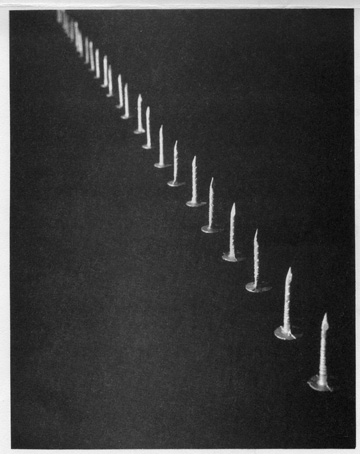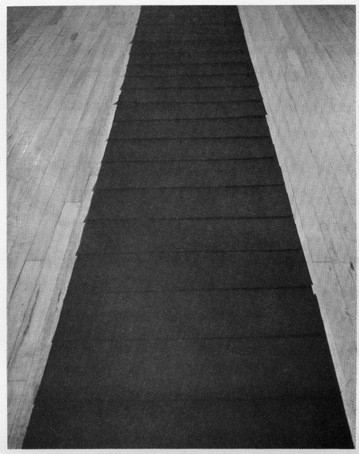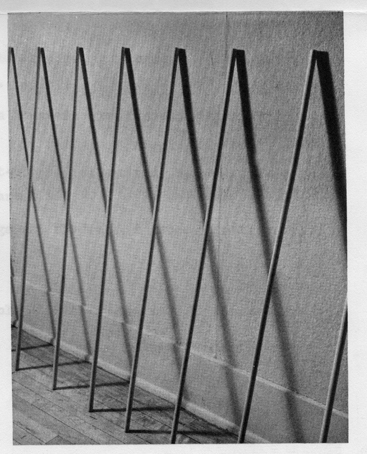
Everyman's Infinite Art (1966)
Harold Gregor
In 1966 Harold Gregor, then chair of the Chapman University Department of Art in Orange, California, mounted an exhibition of everyday objects at the university gallery as a response to the advent of minimalism. Theorizing what he cleverly referred to as "Everyman's Infinite Art," the artist confronted the challenge to modernism that minimalist de-skilling posed by creating a process that would make a new form of art, described by Gregor in a (satirical?) manifesto that was printed to accompany the show: "The objects chosen had to meet the following specifications: a. They could not be organic because natural objects are unique. b. They had to be visually simple in shape. c. They had to be easily availaible in any hardware or department store. d. They needed to be as free as possible from an individual mark, brand name, design or connotation. e. the arrangement had to suggest an infinite continuum." While the gallery doors were closed during the initial exhibition because, as Gregor noted, "the works need not be viewed; they can be described in words," Chapman University Guggenheim Gallery is proud to restage this exhibition using the instructions contained in Gregor's original text as part of Pacific Standard Time.
Sculpture, installation, mixed media, found objects, text Dimensions variable
© 1966 Harold Gregor

Everyman's Infinite Art (1966)
Harold Gregor
This installation of readymade objects in specific arrangements was Harold Gregor's response to the advent and popularization of minimalism. The subject matter is the de-skilling of art, and the tension between text-based descriptions and the experience of seeing artworks in person. Gregor's work, in its use of space, industrial materials, and general attitude of de-skilling seems prescient, given developments in sculpture since 1966.
Sculpture, installation, mixed media, found objects, text Dimensions variable
© 1966 Harold Gregor

Everyman's Infinite Art (1966)
Harold Gregor
This installation of readymade objects in specific arrangements was Harold Gregor's response to the advent and popularization of minimalism. The subject matter is the de-skilling of art, and the tension between text-based descriptions and the experience of seeing artworks in person. Gregor's work, in its use of space, industrial materials, and general attitude of de-skilling seems prescient, given developments in sculpture since 1966.
Sculpture, installation, mixed media, found objects, text Dimensions variable
© 1966 Harold Gregor

Everyman's Infinite Art (1966)
Harold Gregor
This installation of readymade objects in specific arrangements was Harold Gregor's response to the advent and popularization of minimalism. The subject matter is the de-skilling of art, and the tension between text-based descriptions and the experience of seeing artworks in person. Gregor's work, in its use of space, industrial materials, and general attitude of de-skilling seems prescient, given developments in sculpture since 1966.
Sculpture, installation, mixed media, found objects, text Dimensions variable
© 1966 Harold Gregor










